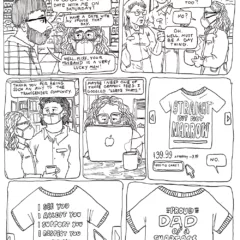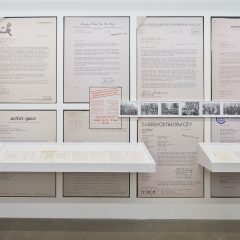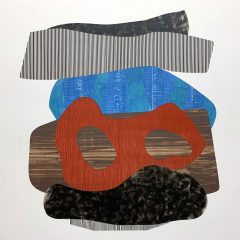[Nate visits a show juxtaposing the at-the-time groundbreaking work of Pierre Molinier with new drawings by contemporary artist Aurel Schmidt. — the Artblog editors]
In major American cities such as Los Angeles and New York, assertions of sexual identity are no longer the risky phenomena they once were. President Obama’s recent announcement of June as LGBTQIA Pride Month–a gesture of support on behalf of the federal government–attests to the changing climate of a country that has for so long ignored the very real, very serious lives of its queer citizens.
This change must be taken into account when examining the current show at M+B Gallery in the West Hollywood neighborhood of Los Angeles. The exhibit’s collection of photomontages by the infamous French Surrealist Pierre Molinier (1900–1976) and new drawings by the Canadian-born, New York-based artist Aurel Schmidt, deals with themes of sexual expression, deviation, desire, and perversity. Molinier and Schmidt are certainly no strangers to these themes; their works are notorious for depicting subjects that deviate from conventions of gender, beauty, and body.
Exploring duality
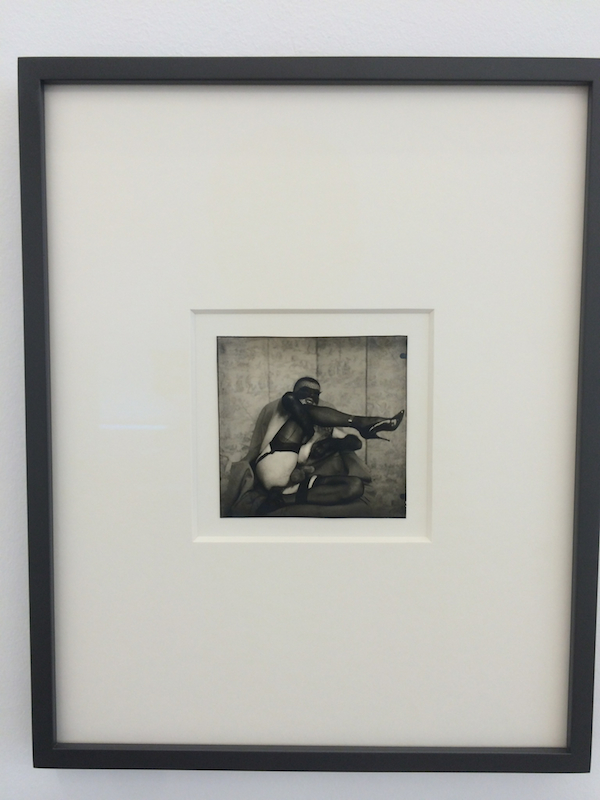
Molinier’s self-portraits, informed by his obsession with the hermaphroditic form (he was gay and often dressed as a woman), are dimly lit, vintage silver prints of an individual who is at once both male and female. We see the artist in elaborate forms of dress that merge the feminine with the revealing. If the shadowy lighting of these prints is meant to obscure, the positioning of Molinier’s body and revealing nature of his clothing is meant to imbue a greater level of intimacy. In “Autoportrait,” we see him lifting his stocking-clad leg upwards, obscuring his face while revealing notably male genitals.
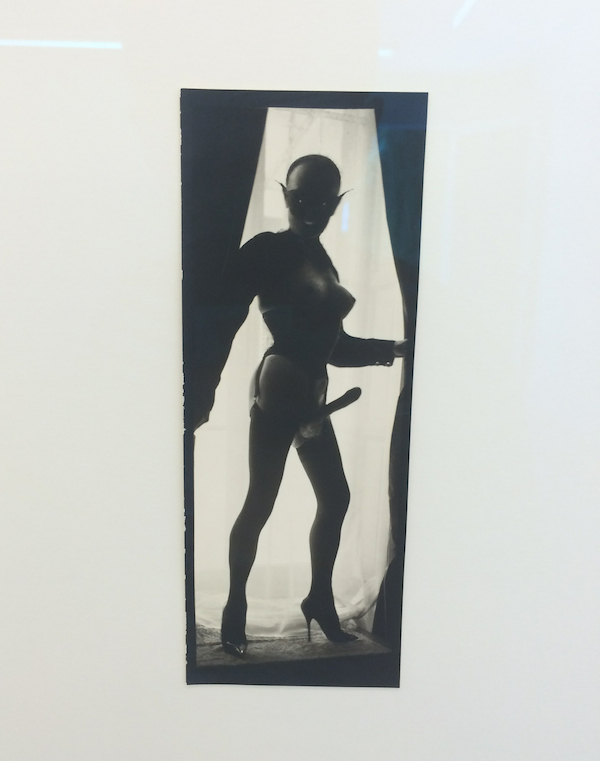
Although the majority of Molinier’s prints on view at M+B, while inarguably unique, very quickly become boring in their similarity, “Autoportrait” penetrates directly to the heart of the Frenchman’s vividly experimental legacy–by embodying both the masculine and feminine while playing upon notions of submission and domination inherent in the positioning of the artist’s body (e.g. a staunch back with a menacingly erect penis, or a delicately reclined torso with exposed genitals, implying vulnerability).
A basic idea, finely executed

Aurel Schmidt’s intricately detailed drawings, while strictly gray-scale, offset the perpetual darkness of Molinier’s portraits. Her meticulous pencil work combines plant life with human sexual organs, most notably in “Untitled (Nipple Flowers),” a new work that depicts flowers resembling daisies with nipples at their centers.
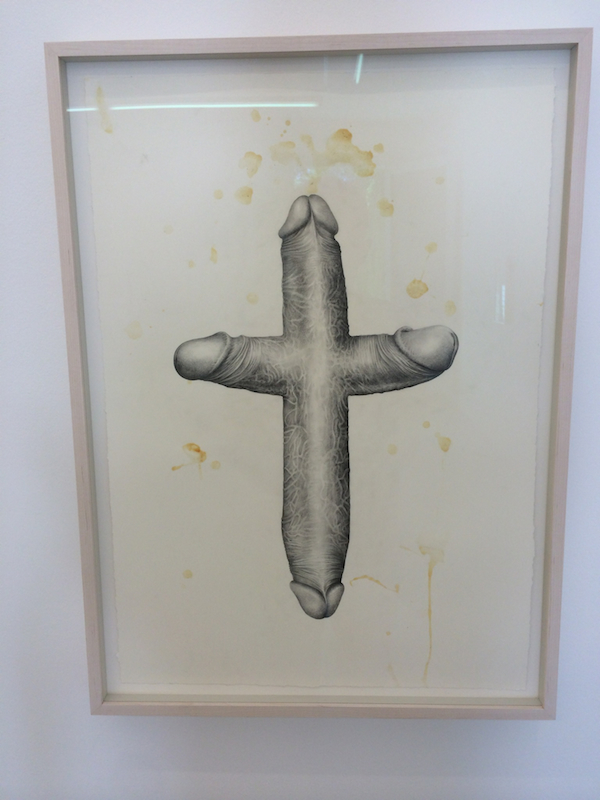
Her drawings range from the subtly risqué (see: “A Rose Has Teeth”) to the purposefully incendiary, such as the mixed-media work “Save Me from Myself”. Here, we are confronted with four sizable penises in the shape of a cross, expertly veined and spurting haphazard yellow splotches. This curious substance is real semen; though its addition attests to the witty resourcefulness of Schmidt’s artistic approach, the substance simultaneously cheapens the effect of the purposefully controversial cross by smothering the iconoclastic image in what amounts to a cheap attempt at sincerity.
While commentary on the fluid, organic nature of sexuality and gender can be gleaned from the relation between natural forms and human body parts, especially in drawings such as “Untitled (Lips)” and “Untitled (Rorschach Flowers 2),” the message of sexual expression as life-force, depicted through Schmidt’s integration of sexual symbols with wild flora, is painfully obvious, albeit beautifully rendered.
Taking context into account, it is possible to grasp the cultural relevance of Molinier’s work while leaving room for the inevitable boredom we desensitized citizens of the 21st century feel upon encountering his self-portraits. Although lurid, the images are no longer as shocking as they once were. This faded impact is an effect of the passage of time since the images’ creation, as well as a result of the endless stream of potentially controversial images that citizens of 21st-century America confront on a daily basis. For her part, Aurel Schmidt’s drawings cannot escape the clutches of kitsch; the intricate drawings offer aesthetic appeal only if we as viewers are willing to ignore the glaringly contrived nature of their themes.
Aurel Schmidt and Pierre Molinier is on view at M+B Gallery at 612 North Almont Drive, Los Angeles, CA 90069 until June 21. Hours: Tuesday – Saturday, 10 am – 6 pm.


